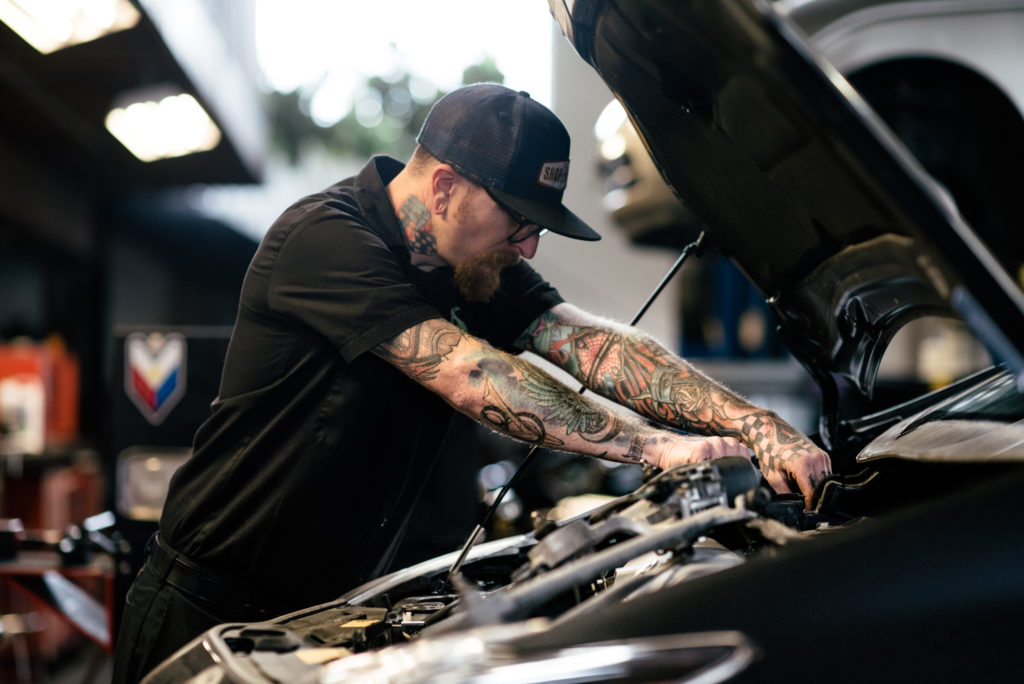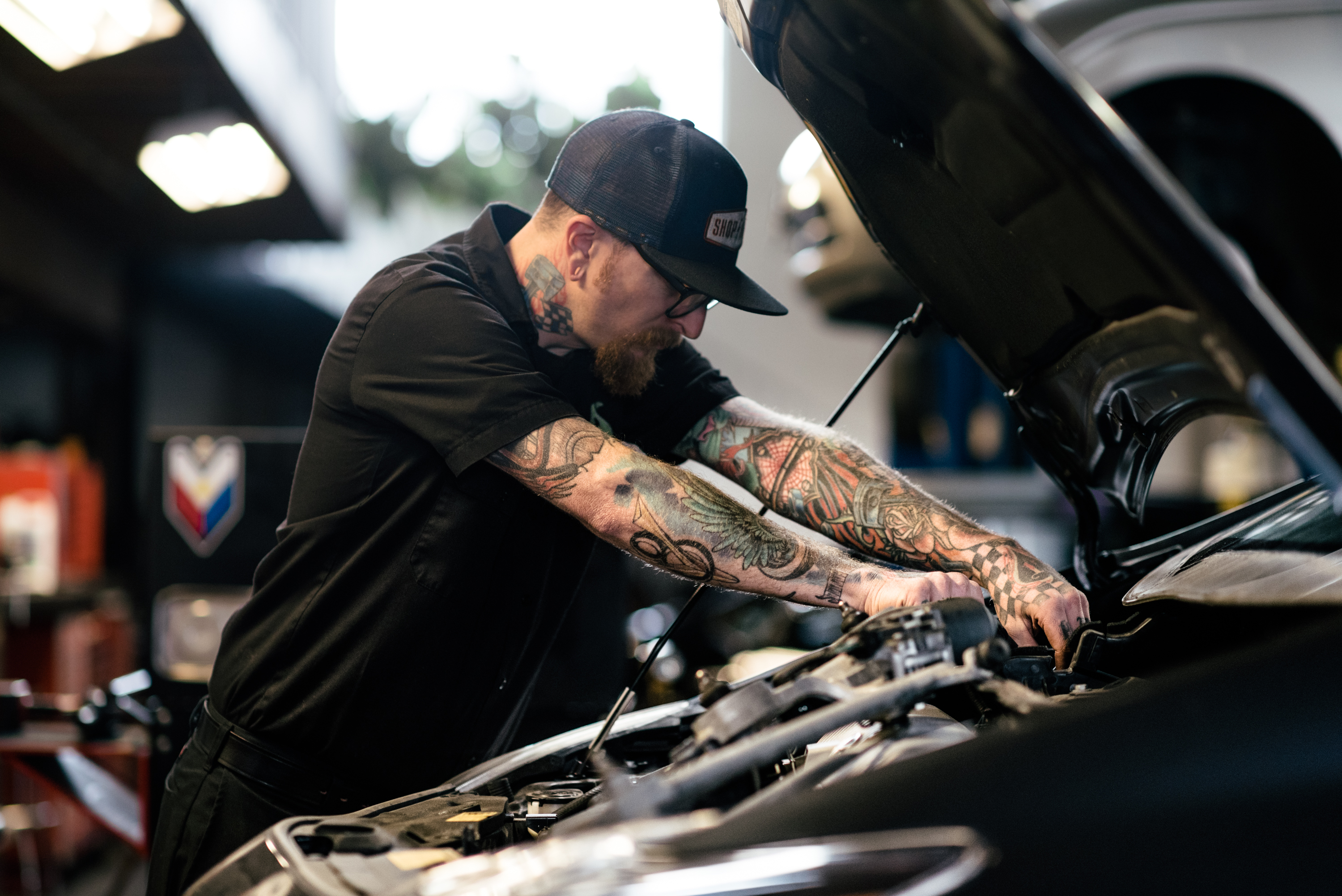
A new day is dawning for the automotive service industry and the stage has been set over the past few decades. Today’s vehicles are filled with electronics, with many of their systems controlled by computers. Every aspect of an engine’s performance, emissions, and fuel economy is monitored and regulated to conform to regulatory standards. The automotive aftermarket repair and maintenance business no longer deals solely with mechanical issues, and technicians must consider the “digital” aspects of most systems when diagnosing and applying a solution.
We now find ourselves in a transitional period due to the fact that modern vehicles can last a long time, with the average car on American roads being twelve years old. While the vast majority of vehicles are still powered by internal combustion engines, an increasing percentage have hybrid powertrains, incorporating electric motors and high-voltage batteries. Many more of these hybrids will be produced and sold, as fuel economy standards steadily increase.
The next step after hybrids will be battery electric vehicles (EVs). Thanks largely to Tesla, EVs have already gained a foothold in places like California, where one of every 19 new car sales is an EV. The new Ford Mustang Mach E will be sold by Ford dealers in all 50 states, potentially expanding the EV market nationwide. Then there are hydrogen fuel cell-powered cars, which are already here and selling in limited numbers. All of these vehicles with alternative power sources will need service and repairs.
Within the fleet of new cars hitting the roads, there is a new type of technology – advanced driver assistance systems (ADAS). This includes automatic emergency braking, rear cross-traffic alert, lane departure warning, adaptive cruise control, and even lane-following steering. Even entry-level cars are now coming with some of these features as standard equipment. The cameras, radars, and sensors that these systems use must operate properly and be correctly calibrated to protect the lives of those inside the vehicles that are so equipped. This is another service opportunity.
And as we progress ever further into the Internet era, our cars are equipped to connect both us and themselves. Smartphone connectivity, sophisticated infotainment systems, built-in wi-fi hotspots, and satellite-based services have become desirable features that consumers want. The ability to communicate, navigate, and find roadside resources like hotels and restaurants are very useful, and now vehicle manufacturers can tap into this always-on network and use it to monitor their vehicles, telling each individual car, truck, or SUV when it needs to come in for service or repairs. Where will those vehicles be directed to go, to your shop – or to the nearest dealer? It’s a good question!
As we enter this brave new world, it is helpful to be aware of the position that the aftermarket auto repair industry occupies. Three-quarters of all the aftermarket repairs are done by independent shops. As the size of the fleet continues to increase and gets older at the same time, this trend should continue – up to a point. A steadily increasing proportion of these vehicles will have sophisticated collision avoidance and communications systems, will be powered by gasoline-electric and battery electric drivetrains, and will be “talking” about their health to their creators. Software expertise will be just as important as hardware know-how. How should technicians and repair shops prepare themselves to play a part in this future?
Let’s take a deep dive into these areas, as well as some others that can provide great opportunities for the techs and the shops that are ready and eager to learn some new tricks!
Mechanics must upgrade their technology skills
Thanks to the multiple computer systems built into vehicles since back in the 1970s, most repair shops have many years of dealing with these technologies. But the rudimentary computers of the 1970s are dinosaurs compared to today’s sophisticated automotive electronic systems. Even so, techs must stay current with new tech, updated systems, and the latest techniques for diagnosis and repair. These areas include:
- Software updates
- Hybrid vehicle diagnosis and repair
- EV motors and control systems
- High-voltage battery troubleshooting and safety protocols
- Advanced driver assistance systems
- Infotainment system repairs
Recruit the staff now that you will need in the near future
Your present staff of technicians should be upgrading their skills on a regular basis to keep up with today’s evolving and more complex vehicles. But consider searching for and hiring people who have the specific skills to work on the vehicles that will be driving in any day now. Trade and technical schools are turning out graduates who know their way around electric and hybrid vehicle motors, batteries, and controllers. These fresh young techs also have up-to-date knowledge of how to diagnose and fix the many types of ADAS that are becoming common in today’s cars.
Servicing today’s connected cars requires a knowledge of internet connectivity, information technology, software engineering, and modern electronics. Having this knowledge can be your shop’s competitive edge, as more franchised new car dealers become less willing to invest in this type of training for their techs.
Showcase your advanced capabilities to get new customers
Best of all, once that you have these high-tech skill sets residing in your shop, you can promote them to those prospective customers who need their new-technology vehicle serviced. There are many hybrids and EVs running around that are out of warranty, and whose owners would give you a shot at servicing them. There are also many body shops that install new ADAS sensors after an accident, but do not have the ability to calibrate the systems afterwards – that’s where you come in! Establish your shop as a leader in these areas, and see your business grow even more as these types of vehicles continue to fill the roads!
More advanced diagnostic equipment will be needed
Vehicle technology moves at a rapid rate. The demands of emission controls, fuel economy, safety technology, and infotainment have filled cars with a wide variety of electronic systems. When one of these systems has a problem, it also takes electronics to diagnose and fix the problem.
Just as vehicles evolve, so does the diagnostic equipment needed to figure out the best way to repair a given system. It’s an arms race, and the shops that can’t keep up will be left behind. Gone are the days of replacing parts until the problem is gone – it’s a waste of your time and the customer’s money. Having the right diagnostic tools in the shop, and knowing how to use them, will make your life easier and make your customers happier.
Auto repair shops are already evolving. Techs are using laptops and tablets to help them diagnose their customers’ cars. Some manufacturers have introduced advanced augmented reality systems that can be used both remotely and in their dealers’ shops. Consider all the possibilities when equipping your shop for future diagnostic equipment needs.
Information is another crucial ingredient in the diagnostic process
But to future-proof your shop, you will also need access to the information about a given vehicle, in order to diagnose and repair it. Access to this information is becoming more and more difficult, as manufacturers play games with independent shops. The latest information about new models can be hard to get from the vehicle manufacturers. This can be used as a tactic to benefit their franchised new car dealers. When you couple this with the requirement to electronically reset certain vehicle systems after a repair, it is easy to see a strategy designed to “lock out” independent shops.
There can also be a “statute of limitations” applied by manufacturers to their older vehicles. At some point, the manufacturer can decide that keeping all of these older vehicles on the road is negatively affecting their new car sales. What better way to boost sales than cutting off their support and making older vehicles impractical to repair?
One solution to this problem is aftermarket data providers, who provide information relating to any vehicle coming into your shop. Through a subscription fee, shops have access to diagnostic information and support, on both older and newer vehicles.
Stay Tuned for part two of this series coming soon!
Author: Stephen Fogel



